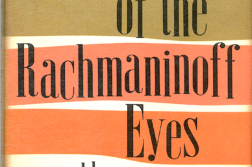A CENTURY has passed since the publication of Swann’s Way in 1913, the first seven volumes that comprise Marcel Proust’s magnum opus, In Search of Lost Time (also translated as Remembrance of Things Past). In 1913, the novel was rejected by several publishers, including the novelist–editor Andre Gide (1869–1951), who viewed it as too verbose, the scribblings of a dilettante and a dandy.
My first encounter with Swann’s Way occurred in the mid-1970s. My friend Sanford urged me to read the novel and raved about all things Proustian. When I looked at the thickness of just the first volume, I wondered how on earth I would ever get through all those pages. At the time, I was in my mid-twenties and my approach to life was one big rush. This book would definitely slow me down and get me to think. I wasn’t quite ready for it. But I did speed-read the first volume (in English translation) and got the gist of the storyline. I even managed to hold my own when it came to making the appropriate references as to the who, what, and where of the narrative at cocktail parties.
In the fall of last year, I picked up my copy of Swann’s Way and started reading it again, only this time in my mid-sixties with a lifetime of losses and memories. Just opening the pages of the novel plunged me into memories of Sanford and his love of everything that Proust ever wrote. He’s no longer here for me to tell him how grateful I am for sharing his enthusiasm for this work. He died of complications from AIDS in 1992.
Proust’s achievement in Swann’s Way is that he transports the reader not only to another time and place but also into the internal worlds of his characters. The work is both a social and psychological novel. We learn of the tastes, fashions, hypocrisies, and sexual conceits of turn-of-the-century Paris. But Proust also delved into the darker regions of the psyche in his depiction of jealousy and obsessive, possessive love.
Proust’s central psychological interest was involuntary memory—the route to the recovery of “lost time.” Taking a bite out of the madeleine opens up a world of long forgotten sensory experiences. Proust frees us from chronological or linear time and introduces us to kairos or “being time,” when an opening exists for past, present, and future to appear as one. The past is no longer a “foreign country” but is within us always.
In Swann’s Way, Proust immerses the reader in a world of thinly veiled passions. With great subtlety and finesse, he depicts a scene in which Marcel, the protagonist, masturbates while contemplating the Combray landscape. In another incident, Marcel falls asleep under some bushes outside Mlle. Vinteuil’s house (she’s the daughter of a much admired and accomplished composer), where she’s engaged in a very intimate sexual encounter with her lesbian lover. Later, in part two of the novel, we’re introduced to the character of Odette, who’s the lover of Charles Swann (art lover and collector, connoisseur, and friend to Marcel’s family). Odette engages in bisexual affairs and is the object of Swann’s obsessional love.
We also meet the Baron de Charlus, æsthete and homosexual. In Proust’s time, homosexuality was not illegal in France, but it was socially stigmatized. Proust didn’t “come out” in our sense during his lifetime. He was finally “outed” when André Gide’s personal letters were published after the writer’s demise in 1951. Similarly, Proust was closeted about his Jewish ancestry: his mother was Jewish and his father was Catholic. His decisions to hide both his homosexuality and Jewish background were grounded in the realities of early 20th-century France.
After a hundred years, Swann’s Way continues to delight. Part bildungsroman (a coming-of-age story), part social satire, part love story, among other things, the novel speaks to us about the longings and the delusions that we cling to throughout our lives, regardless of sexual orientation. Proust probes the truism that no one is who he or she seems to be. He holds up not a mirror but a magic lens that reveals our disguises, our masks of social respectability. At the end of the novel, he refers to one of his characters, the composer Vinteuil, as an “explorer of the unseen”—which, of course, is an apt description of Proust himself.
Irene Javors, a psychotherapist based in New York, is the author of Culture Notes: Essays on Sane Living.




